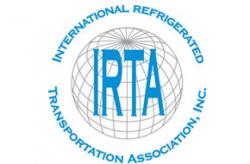Mitigating Disruptions
USDA releases Agri-Food Supply Chain Assessment.
The United States Department of Agriculture (USDA) issued a report entitled “USDA Agri-Food Supply Chain Assessment: Program and Policy Options for Strengthening Resilience” on February 24, 2022. The report was triggered by President Biden’s Executive Order 14017 on “America’s Supply Chains,” which directed several federal agency actions to secure and strengthen America’s supply chains. One of these directions was for the secretary of agriculture to submit a report to the president that assesses the supply chains for the production of agricultural commodities and food products.
The resulting report outlines the risks and resilience of U.S. agri-food supply chains and identifies potential solutions to address vulnerabilities. This assessment involved extensive input and review by USDA subject matter specialists, consultations with other federal agencies and recommendations obtained through a public comment process. GCCA met with USDA and other administration officials multiple times during the development of the report, as well as submitted formal written comments. The assessment identifies six priority vulnerabilities facing U.S. agri-food supply chains and offers suggested federal actions. Many of the issues included in the report were highlighted by GCCA in its communications with USDA. Below is a summary of the six priority areas and selected proposed policy actions of importance to the cold chain.
Priority 1: Concentration and Consolidation in Agri-Food Production, Manufacturing and Distribution
Resilience in agri-food supply chains depends on having access to reliable and diverse sources to meet supply and demand. Weak links in supply chains occur at “choke points” in food production, manufacturing and distribution. Even temporary shutdowns of one or more of these facilities (from fire, electricity disruption, labor shortages, cyberattacks, worker illness, etc.) can threaten significant supply chain disruption.
Selected proposed policy actions include:
- Investing $4 billion to strengthen critical supply chains in the food system by, for example, prioritizing grants, loans and complementary support to promote regional/ local and diverse food processing, aggregation, distribution and other necessary capacity and purchases from domestic firms to the maximum extent possible consistent with the law.
- Backing private lenders through the Food Supply Chain Guaranteed Loan Program, which leverages $100 million of American Rescue Plan (ARP)Act funding to provide more than $1 billion for qualified lenders to finance food systems projects, specifically for the start up or expansion of activities in the middle of the food supply chain.
- Prioritizing support for workforce development and safety programs and increasing technical assistance across the broader food production/processing sector. • Supporting the development of cooperative aggregation and processing facilities, including retrofitting or expanding existing facilities, for locally grown produce meant for institutional markets, food hubs, food banks, schools, etc.
- Building on efforts initiated during the COVID-19 pandemic to ensure food and agriculture sector workers are prioritized for worker health and safety measures such as prioritized access for vaccination and other prophylactic treatments, testing, and personal protective equipment (PPE) during public health emergencies.
- Investing $1 billion in diversifying meat and poultry processing capacity, workforce development, research and innovation, and technical assistance.
Priority 2: Labor Needs
The agri-food supply chain has historically experienced a tight labor market as the ongoing decline in rural population exacerbates difficulties in finding qualified workers. A recent survey by Purdue University and CME reported that 66% of agricultural employers are having difficulty finding workers to fill agricultural jobs. In addition to shortages of hired workers generally, the COVID-19 pandemic exposed the significant impacts that a public health emergency has on the broader agricultural workforce, the implications for the food supply, and the need to strengthen prevention and treatment of illness among workers engaged in agricultural production, food processing, distribution, transportation and retail. This vulnerability was seen across workers in every area of the supply chain including farms, production facilities, truckers, railroad crews, river barge crews, distribution facilities/ warehouses, grocery stores, school nutrition workers and the restaurant industry.
Selected proposed policy actions include:
- Making available $1.4 billion in grants through the Pandemic Response and Safety Grant program and the Farm and Food Worker Relief Grant program to support measures, including for PPE, for producers, processors and workers across the agri-food supply chain in response to COVID-19.
- Utilizing research, extension and landgrant university networks and community colleges to train individuals attending these institutions and utilize skills-based apprenticeship opportunities in local communities to build skills in effective farm and land management practices, agribusiness strategies and food safety. Continuing support for USDA’s National Institute of Food and Agriculture (NIFA) workforce development programs such as the Agricultural Education and Workforce Development grants.
- Deploying $100 million in ARP funding to support development of a well-trained workforce, safe workplaces, and goodpaying, quality jobs by working closely with partner organizations, including labor unions, with expertise in workforce development and worker health and safety.
- Engaging with Department of Labor (DOL) on how to further leverage existing USDA programs in workforce development and more closely partner on DOL programs such as the Susan Harwood Training Grant program and DOL and DOT registered apprenticeship programs for drivers to support food and agricultural needs.
Priority 3: Ecological and Climate Risks to Crops
Agriculture and fisheries are highly vulnerable to severe weather events and climate change including droughts, floods, severe storms, heat waves, pests and disease, and disruption of harvest patterns. Shortages of water for irrigation in western states especially threaten vegetable, fruit, and dairy production. A USDA assessment identifies the following vulnerabilities that need to be addressed:
- Drought and irrigation water scarcity.
- Emergence of new crop and seedborne pests and diseases.
- Ongoing needs related to Good Agricultural Practices (GAPs) for Food Safety.
- Loss of pollinators and pollinator services essential for crop production.
- Need to diversify specialty crops production to adapt to changing conditions.
Priority 4: Livestock and Poultry Disease Threats
Livestock and poultry are vulnerable to biosecurity and disease threats. An outbreak of a virulent animal disease can spread quickly and cause devastating losses to the industry and disrupt food supply chains. Key vulnerabilities facing animal health include diseases and threats such as: African Swine Fever, Foot and Mouth Disease and Avian Influenza. Selected proposed policy actions include:
- Strengthening disease monitoring and prevention, regulatory control and response, training and extension of best management practices, and animal health research for priority animal diseases.
- Enhancing a “one health” approach that considers animal, human and environmental contributions to disease surveillance and response in wildlife and domestic animals. • Strengthening global disease and vector monitoring and conduct vulnerability assessments to identify opportunities to prevent entry of transboundary and emerging diseases to U.S. animal populations.
- Enhancing risk-based surveillance in both wildlife and domestic livestock and poultry populations for early detection of disease and prevention of disease transmission between vulnerable populations.
- Strengthening traceability of meat/meat products to meet export certification with negotiated zoning protocols and animal health language with foreign governments and trade partners.
Priority 5: Transportation Bottlenecks
The nation’s extensive transportation system is of paramount importance for an efficient, competitive and flexible agri-food system. Transportation enables food to move from our farms to our tables and to ports for export to foreign markets. It also ensures American producers receive the lowest prices on inputs and the highest prices for their crops while ensuring American consumers pay less for the food on their tables. Together, the four major transport modes – barges, ocean vessels, trucks and railroads – operate as a seamless network. They both complement and compete with one another to deliver products efficiently and economically within ever-changing domestic and global markets. This system of inland waterways, ocean ports, containers, highways and bridges, trucking and railroads, has enabled the United States to become the world’s largest exporter, as well as one of the largest importers, of food and agricultural products. Agriculture is the largest user of the freight transportation system in the United States, and the need for transportation services will only continue to increase as agricultural production, exports, incomes, trade and world population continue to grow. Thus, a modern, efficient, reliable, and competitive transportation system is necessary to the continued success of American agriculture. Selected proposed policy actions include:
- Deploying financial support to strengthen the nation’s highway infrastructure.
- Establishing an agricultural freight secure data commons.
- Encouraging and coordinating regional infrastructure planning among states.
- Continuing ongoing collaboration and information sharing with DOT and DOL to address trucking challenges in agriculture. Supporting the Drive-SAFE Act – designed to find ways to let younger people enter the industry as well as reach out to underrepresented demographics, including women and minorities, to open trucking as a career path.
- Implementing regulatory changes to enhance competition within the consolidated industry and improving the rate dispute process.
Priority 6: Trade Disruptions
U.S. agri-food supply chains are highly integrated into global markets, with a substantial share of agricultural and food products both exported and imported. Trade improves the efficiency and performance of the agri-food sector. It enables commodities, intermediate goods and final consumer products to be sourced from where they can be grown or manufactured at the lowest cost. Production and manufacturing of many critical agricultural inputs and food products rely on components produced in foreign countries. Dependence on single-source or unreliable foreign sources for critical materials and products is a potential vulnerability to U.S. agri-food supply chains should that source be disrupted. Heavy reliance on one or few foreign market destinations for U.S. agricultural exports creates risk of shocks to producers and supply chains if access to those markets becomes limited. Transportation bottlenecks arise from truck driver shortages, port congestion, aging or outdated infrastructure and inspection operations.
Food and agricultural products that require refrigeration or that have a short shelf life, such as certain meat and poultry products and fresh fruits and vegetables, are especially vulnerable to transportation delays due to refrigeration costs and spoilage. To support increased resiliency across U.S. agri-food supply chains relative to potential trade disruptions, four core areas were identified (export promotion, sanitary and phytosanitary (SPS) issues, shortages in packaging, transport materials and certain ingredients, and ocean shipping) under which a variety of actions could be implemented.
Selected proposed policy actions include:
- Strengthening and diversifying U.S. exporters across the supply chain, improving access by small exporters from diverse backgrounds to USDA export promotion programs.
- Accelerating the adoption of electronic certification (e-Cert) for phytosanitary and sanitary import and export certificates.
- Convening a public/private taskforce at the national level to provide recommendations and strategies to prevent future occurrences of shortages in pallets, packaging and other shipping containers, and essential raw ingredients for food processing in collaboration with FDA and exploring increased domestic sourcing for these items.
- Exploring creation of a strategic reserve of shipping containers and pallets. This reserve could help ensure that prioritized goods, such as perishable produce and agricultural inputs, are available when they are needed.
- Continuing work by USDA with the Federal Maritime Commission (FMC) to support use of its full regulatory power authorities to promote free and fair competition through 1) reviewing existing carrier alliances to determine if they decrease service, increase transportation costs, or reduce competition, 2) improving transparency in service contract rates 3) addressing unfair detention and demurrage fees, and 4) using any other appropriate tools to promote fair competition in ocean freight shipping.
GCCA appreciates USDA efforts to conduct this assessment of the food supply chain. Many of the recommended policy actions correspond to issues raised by GCCA and have the potential to assist cold chain companies in mitigating supply chain disruptions. GCCA will continue to work closely with USDA and the Administration as they move forward with implementing the policy recommendations to strengthen the food supply chain.
LOWELL RANDEL is Senior Vice President, Government and Legal Affairs at GCCA.
EMAIL: lrandel@gcca.org
Source: Cold Facts May/June 2022 issue



